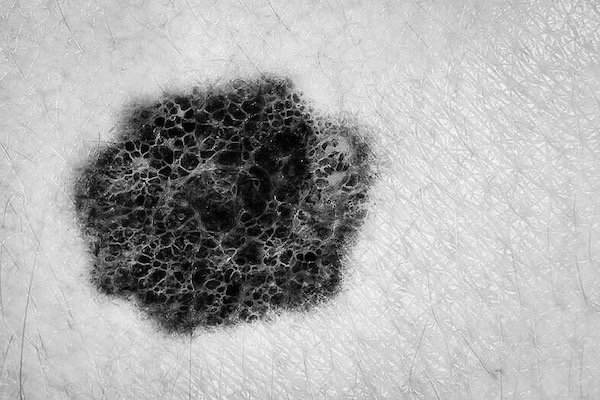Skin tumours are the most common tumours in humans, white skin cancers the most common non-benign skin tumours. Since they usually occur in visible and easily accessible areas, there is the possibility of early clinical diagnosis and therapy. Early therapy reduces the burden on patients accordingly.
Every year, an estimated 20,000 to 25,000 people are diagnosed with basal cell carcinoma or squamous cell carcinoma in Switzerland. Immunosuppressed patients are particularly affected by malignant epithelial skin tumours.
Basal cell carcinoma and squamous cell carcinoma do not usually pose major therapeutic challenges because they can usually be completely removed surgically and uncontrollable recurrences and/or even metastasis are only to be feared in certain risk groups. Local recurrences can be removed by means of renewed surgical treatment.
The incidence of black skin cancer is steadily increasing. Every year, around 2,800 people in Switzerland are diagnosed with melanoma. Men and women are affected equally often. Black skin cancer can also occur in younger people: Almost a quarter of people suffering from melanoma are under 50 years old at the time of diagnosis.

Basal cell carcinoma
Basal cell carcinomas, like squamous cell carcinomas of the skin, are non-melanotic skin cancers. Basal cell carcinomas develop from cells in the so-called basal cell layer of the skin and the root sheaths of the hair follicles.
They occur most frequently in the head and neck area, less frequently on the trunk, arms or legs. In contrast to malignant melanoma, basal cell carcinomas rarely form metastases. However, the tumors can grow aggressively into the surrounding tissue and also affect cartilage and bone
Squamous cell carcinoma
Squamous cell carcinoma of the skin accounts for approx. 20% of all cutaneous tumors. The most important etiologic factor for the development of squamous cell carcinoma is chronic exposure to UV radiation in combination with a light skin type.
Squamous cell carcinoma of the skin usually develops on the basis of a precancerous lesion or a carcinoma in situ (actinic keratosis, leukoplakia, Bowen’s disease, erythroplasia Queyrat), but can also develop on chronically inflammatory skin (radioderm, chronic wound, chronic inflammatory skin disease) or de novo in clinically normal skin. In principle, primary lymphogenic metastases are possible, but only in about 5% of all cases.
Malignant melanoma (black skin cancer)
Malignant melanoma of the skin is the skin tumor with the highest metastasis rate and is responsible for more than 90% of all deaths from skin tumors. Early detection and the best possible treatment are therefore very important.
The change in leisure and vacation habits with significantly increased UV exposure in the last 5 – 6 decades is the most important reason for the increase in this tumor entity.




